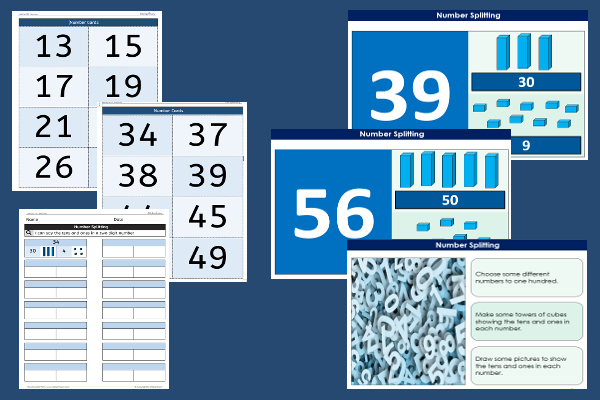Home > Key Stage One > Maths > Number > Place Value > Tens and Ones
Number Splitting

This maths teaching pack for Key Stage One gets the children to identify and record how to partition different pairs of two digit numbers into their matching sets of tens and ones using bar model diagrams.
The class can use concrete equipment to model the value of the digits in each selected number and then use diagrams to record the identified values for their tens and ones.
Download this teaching pack including classroom activities and an interactive presentation to identify and record how to partition different pairs of two digit numbers into their matching sets of tens and ones using bar model diagrams
Activities in this teaching pack include a set of cards to select different two digit numbers to one hundred to use when partitioning into tens and ones and a template to identify and record the tens and ones to match different two digit numbers using bar model diagrams.
The interactive presentation gets the children to explore how to how to partition different two digit numbers into their matching sets of tens and ones.
This lesson is part of a maths scheme of work to get the children to explore, model and record the place value of the tens and ones digits in a range of different numbers to one hundred. There are teaching activities for shared learning, differentiated worksheets to support independent learning and interactive presentations to introduce concepts and key skills.
-

Garden Numbers
Identify and model some of the different calculation techniques that can be used when adding pairs of single digit numbers
-

Summer Stories
Practise composing and presenting narrative stories with familiar settings to illustrate the events and experiences that could happen during the summer
-

Fraction Numbers
Investigate how to use concrete equipment, diagrams and calculations to identify and record the matching fractions of different numbers
-

Family Holiday Lists
Explore how to compile sentences punctuated using commas to list some of the special things that families can use, complete and experience on a holiday
